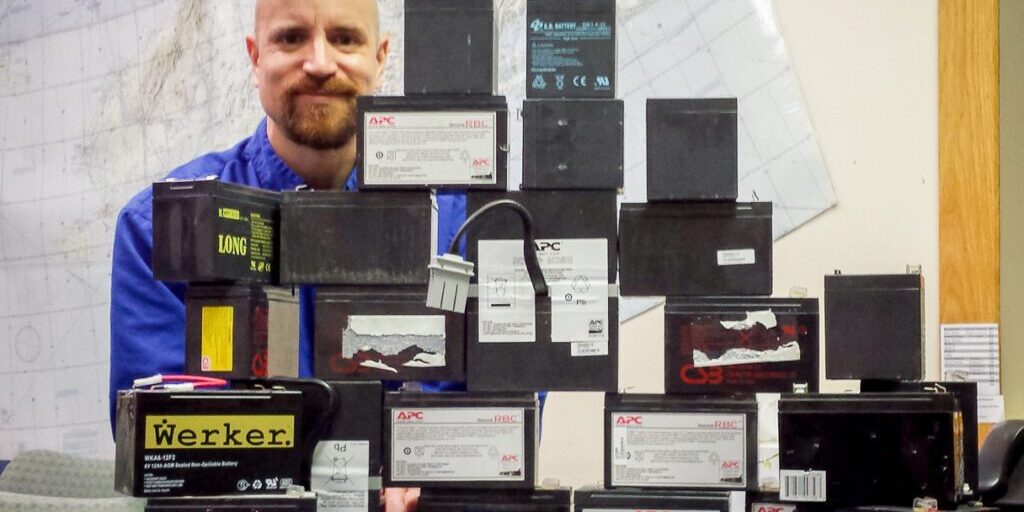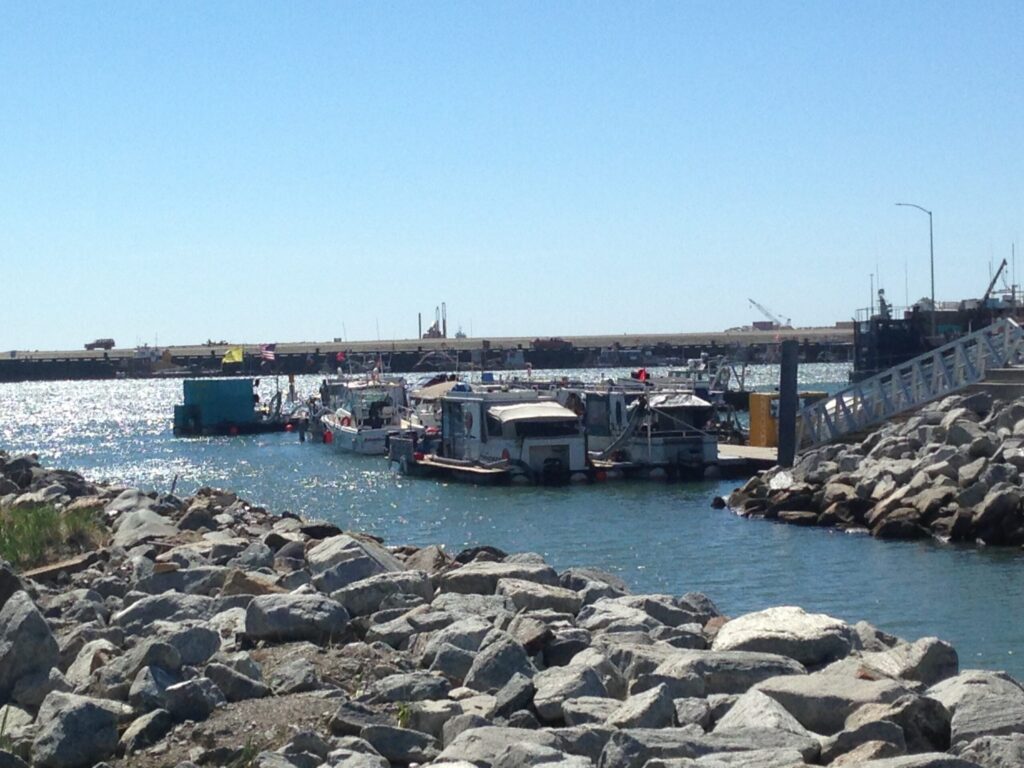In this edition of Engineer’s Corner, volunteer engineer Rolland Trowbridge focuses on our mission’s consumption of batteries – in particular, the very specialized batteries that keep our equipment working during Nome’s frequent power outages and brown-outs – and why our new studios will help us decrease our battery use.
The photo above shows all of the batteries KNOM exhausted during the past year alone; Rolland explains why:
In Nome, our lights dim and brighten without warning. In the lower 48, the electricity in your house may have been generated hundreds of miles away and comes from an interconnected grid. When one part of the grid needs more power, the grid shifts the extra power from another part with less load. In Nome, our power system is isolated. There is no extra power. When someone needs a lot of power, everyone else gets a little less until the building-sized diesel generator that supplies the whole town can make up the difference. This means our power supply isn’t stable, which makes running a radio station a frequent challenge.
At KNOM, we have a well-maintained and state-of-the-art diesel generator that starts up when the power goes off, but it takes ten seconds to activate. To make up that ten second gap before our generator kicks in, and to smooth out the normal ups and downs of living off of a closed system, we have un-interruptible power supplies (UPS) on everything – dozens of them.
Each UPS has two to four batteries. In the lower 48, a UPS battery lasts about 5-7 years or longer. In Nome, where they are being used constantly, a UPS battery lasts about two years. We have hundreds of these batteries protecting the sensitive equipment that runs our station. This equates to thousands of dollars and hours of time spent on replacing batteries every year.
In our new studio, we are getting rid of our dozens of UPS units and going to one large, industrial grade UPS. It will have the ability to handle the load of the entire station until our back up generator kicks in, and it will have much, much lower operating costs over its lifetime than our present system. Your donated dollar today will save many donated dollars in the future. We are very thankful of your support of our mission in Western Alaska.
This article is part of the January 2014 edition of our newsletter,
The Nome Static.
Read more articles from this issue (January 2014)






